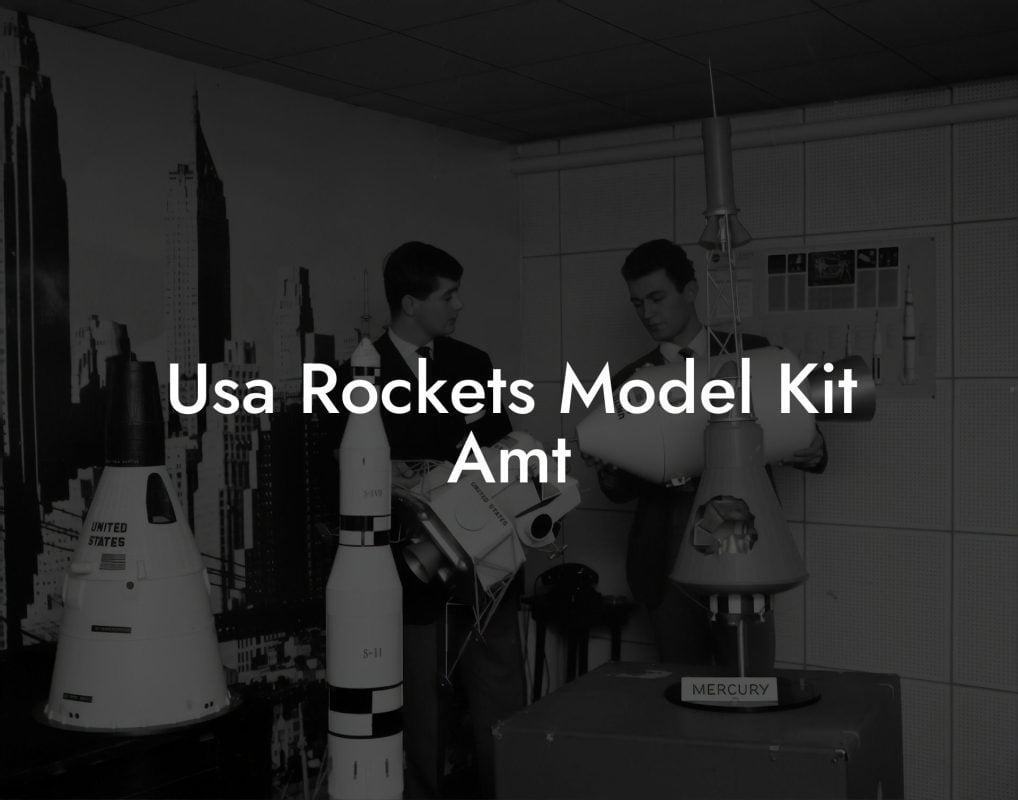Imagine soaring through the skies, defying gravity and conquering the elements with your trusty model rocket by your side. But, have you ever stopped to think about the impact of wind on your rocket's flight? Wind resistance can be a major obstacle, causing your rocket to veer off course and compromising its overall performance. However, with the right techniques and strategies, you can overcome this challenge and ensure your model rocket compensates for wind.
Quick Links to Useful Sections
- Understanding Wind Resistance and Its Effects on Model Rockets
- Designing Model Rockets to Withstand Wind Resistance
- Techniques for Compensating for Wind
- Real-World Examples of Wind Compensation in Model Rocketry
- Case Study 1: The NASA Student launch Initiative
- Case Study 2: The European Model Rocketry Championship
- Resources and community Support: Your Next Steps
- Frequently Asked Questions: Wind Compensation in Model Rocketry
Understanding Wind Resistance and Its Effects on Model Rockets
Wind resistance, also known as drag, is the force that opposes the motion of your model rocket through the air. It's caused by air molecules colliding with the rocket's surface, creating friction and slowing it down. The amount of drag depends on several factors, including the rocket's shape, size, speed, and the density of the air it's flying through.
When wind is present, it can significantly affect your model rocket's flight. The rocket may experience turbulence, loss of altitude, and reduced speed. In extreme cases, strong winds can even cause the rocket to crash or lose its stability.
Designing Model Rockets to Withstand Wind Resistance
To combat wind resistance, model rocket designers employ various techniques to minimize drag and maximize stability. Here are some key design considerations:
- Aerodynamic Shape: A sleek, streamlined shape can reduce drag by allowing air to flow smoothly around the rocket.
- Lightweight Materials: Using lightweight materials, such as balsa wood or plastic, can reduce the rocket's overall weight and minimize drag.
- Fin Design: The shape and size of the fins can affect the rocket's stability and ability to withstand wind. Larger fins can provide more stability, but may also increase drag.
- Nose Cone Shape: A rounded nose cone can help reduce drag by allowing air to flow smoothly around the rocket's nose.
By incorporating these design elements, model rocket enthusiasts can create rockets that are better equipped to handle wind resistance and maintain a stable flight path.
Looking For The Best Model Rocket Kits? You'll Love These:
Techniques for Compensating for Wind
In addition to design considerations, there are several techniques you can use to compensate for wind when launching your model rocket:
- Angle of Attack: Launching your rocket at an angle to the wind can help it compensate for wind resistance. This technique requires careful calculation to ensure the rocket reaches its desired altitude.
- Wind Correction: By adjusting the rocket's trajectory to account for wind direction and speed, you can help it stay on course.
- Boosters and Staging: Using boosters and staging can provide additional thrust to help your rocket overcome wind resistance and reach higher altitudes.
- Recovery Systems: A reliable recovery system, such as a parachute or streamer, can help your rocket return safely to Earth, even in windy conditions.
By mastering these techniques, you can ensure your model rocket is well-equipped to handle wind resistance and achieve a successful flight.
Real-World Examples of Wind Compensation in Model Rocketry
From amateur enthusiasts to professional aerospace engineers, many have successfully developed model rockets that can compensate for wind resistance. Here are a few inspiring examples:
Case Study 1: The NASA Student launch Initiative
The NASA Student Launch Initiative is a program that challenges students to design, build, and launch model rockets that can reach an altitude of one mile while carrying a payload. To overcome wind resistance, teams use advanced design software, wind tunnel testing, and clever engineering solutions.
Case Study 2: The European Model Rocketry Championship
The European Model Rocketry Championship is an annual competition that attracts top model rocket enthusiasts from across the continent. Competitors must design and build rockets that can withstand wind speeds of up to 20 km/h while achieving precise altitude and distance targets.
These examples demonstrate the creativity and innovation that goes into designing model rockets that can compensate for wind resistance.
Resources and community Support: Your Next Steps
If you're eager to learn more about model rocketry and wind compensation, there are many resources available to help you get started:
- Online Forums and Communities: Join online forums and communities, such as the National Association of Rocketry or the Model Rocketry subreddit, to connect with fellow enthusiasts and learn from their experiences.
- Model Rocketry Clubs: Look for local model rocketry clubs or organizations that offer workshops, tutorials, and launch events.
- Design Software and Tools: Utilize design software, such as OpenRocket or RockSim, to simulate and optimize your rocket's performance in various wind conditions.
By tapping into these resources and connecting with the model rocketry community, you can gain the knowledge and skills needed to design and launch rockets that can overcome wind resistance.
Frequently Asked Questions: Wind Compensation in Model Rocketry
Here are some frequently asked questions about wind compensation in model rocketry:
1. How do I calculate wind resistance for my model rocket?
You can use online calculators or software, such as OpenRocket, to estimate wind resistance based on your rocket's design and environmental conditions.
2. What is the best way to stabilize my model rocket in windy conditions?
A combination of design elements, such as fins and nose cone shape, along with techniques like angle of attack and wind correction, can help stabilize your rocket in windy conditions.
3. Can I use weather forecasting tools to predict wind conditions for my launch?
Yes, you can use weather forecasting tools, such as wind speed and direction apps, to plan your launch and adjust your rocket's design and trajectory accordingly.
4. How do I recover my model rocket safely in windy conditions?
A reliable recovery system, such as a parachute or streamer, can help your rocket return safely to Earth, even in windy conditions.
Looking For The Best Model Rocket Kits? You'll Love These:
Useful Interruption: Dive deeper into the world of Model Rockets with our most popular sections. If there is anything you think is missing or anything you would love for us to write about, just give us a shout.
- Getting Started & Basics With Model Rockets
- Model Rocket Design, Build & Customization
- Model Rocket Propulsion & Engine Technology
- Model Rocket Launch Techniques & Recovery
- Model Rocket Advanced Rocketry & Innovations
- Model Rocket DIY and Customization
- Model Rocket Equipment Reviews & Digital Tools
- Community, Competitions & Education
- Model Rocket Troubleshooting & FAQs
- Model Rocket Bonus/Seasonal & Niche Topics
A group of model rocket enthusiasts gathered at a field for their weekly launch event. Among them was Dave, a seasoned builder known for pushing the limits of hobby rocketry. This time, he had outdone himself.
“Ladies and gentlemen,” Dave announced, dramatically pulling a cloth off his latest creation, “I present to you: The Kraken!”
The crowd gasped. This wasn’t just a model rocket, it was a monster. The thing stood 8 feet tall, had six clustered engines, and was covered in enough duct tape to qualify as a classified aerospace project.
“Dave,” muttered Steve, the cautious safety officer, “Have you, uh… done the math on this?”
“Math?” Dave scoffed. “I built it in my garage at 3 a.m. with parts from eBay. This is an art piece, Steve.”
The countdown began.
5…
4…
3…
2…
1…
The engines ignited with a BOOM, and The Kraken shot up… kind of. It immediately did a violent barrel roll, narrowly missing the spectators before skyrocketing at an angle that could only be described as “legally questionable.”
The crowd collectively ducked as The Kraken flew straight over the adjacent cornfield, where Old Man Jenkins, the grumpiest farmer in town, was minding his business.
KABOOM!
The rocket disappeared behind the barn. A moment later, a flaming piece of Estes igniter wire landed at Steve’s feet. The silence was deafening.
And then, an unmistakable sound echoed across the field.
Jenkins’ shotgun being cocked.
“DAVE!!!” Steve shouted. “RUN.”
And that was the day Dave invented the first-ever biologically powered rocket booster: pure adrenaline.
To this day, nobody knows where The Kraken landed, but legend has it, it still haunts the skies, terrifying unsuspecting drones and low-flying birds.















